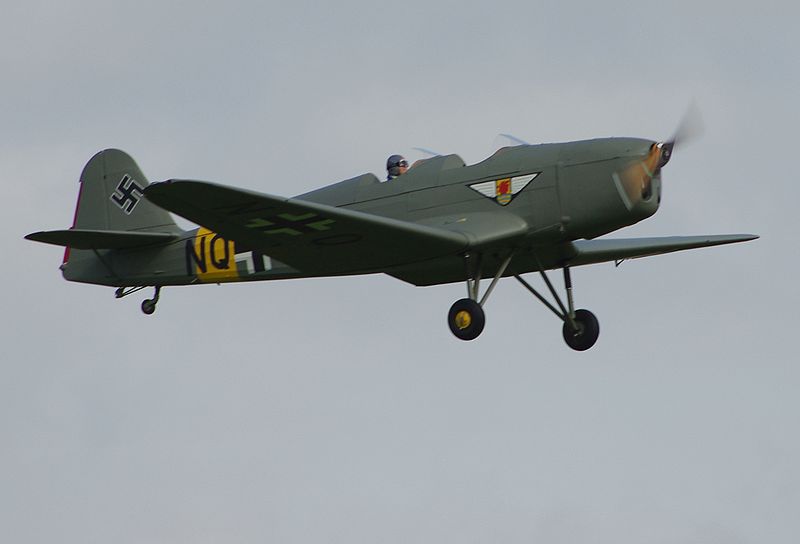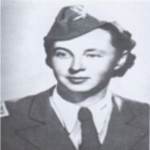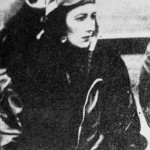
Klemm 35
A fost un avion german, pentru antrenament, sport, dezvoltat ca succesor al Kl 25
Despre Klemm 35 – Wikipedia
Rol: Avion pentru antrenamente, două locuri, sport
Fabricant: Klemm Leightflugzeugbau Gmbh
Proiectant: Friedrich Fecher
Primul zbor: 1935
Introducere: 1935
Status: nu se mai fabrică
Primii utilizatori:
Luftwaffe
Cehoslovacia
Ungaria
Romania
Suedia
Produs: 1937-1944
Număr de aeronave construite: c.2,000?
Cost unitate: RM17,500

Klemm 35
A fost un avion german, pentru antrenament, sport, dezvoltat ca succesor al Kl 25
Klemm Kl 35 a fost un avion german, pentru antrenament, sport, dezvoltat ca succesor al Kl 25. Un produs Klemm Leichtflugzeugbau Gmbh având același singur motor, consola cu low-aripă de configurare, diferența majoră fiind introducerea unei aripi-pescăruș inversate.
Dezvoltare
[tp not_in=”en”]Kl 35 a fost proiectat în 1934 sub auspiciile Reichsluftfahrtministerium (RLM). Dipl. Ing. Friedrich Fecher a avut întreaga responsabilitate pentru constructii. Construcții de așa-numita Gemischtbauweise a fost folosită: oțelul pentru fuselaj, aripi si lemn pentru unitățile cozii și doar cantități mici de aliaj ușor pentru garniturile utilizate. Aceasta a devenit o metoda de constructie preferată cu RLM în jurul valorii de data aceasta, din considerentele de disponibilitate materialului strategic.[/tp]
[tp lang=”en” only=”y”]The Kl 35 was designed in 1934 under the auspices of the Reichsluftfahrtministerium (RLM). Dipl. Ing. Friedrich Fecher had overall responsibility for the construction. The so-called Gemischtbauweise construction was used: steel for fuselage, wood for wings and tail units and only small quantities of light alloy for linings were used. This became a preferred building method with the RLM around this time, because from considerations of strategic material availability.[/tp]
Producție
[tp not_in=”en”]Rezultatele studiului trebuie să fi fost satisfăcătoare, deoarece, în iulie 1936, 23 de aeronave au fost comandate pentru livrare între iulie și septembrie 1937, cu o producție planificată să crească la 3 pe luna. Klemm a fost la momentul de fabricație Fw 44 sub licență de la Focke-Wulf.[/tp]
[tp lang=”en” only=”y”]The results of the trial must have been satisfactory, because in July 1936, 23 aircraft were ordered for delivery between July and September 1937, with production planned to increase to 3 per month. Klemm was at the time manufacturing the Fw 44 under licence from Focke-Wulf.[/tp]
[tp not_in=”en”]În acest timp RLM, era deja în căutare de un antreprenor pentru a construi sub licența Kl 35A, alegând Fieseler care era deja cu licență de producție cu He 72 și Fw 58, Storchs la uzina Kasseler.[/tp]
[tp lang=”en” only=”y”]By this time the RLM was already looking for a sub-contractor to build the Kl 35A under licence, choosing Fieseler which was already undertaking licence production of the He 72 and Fw 58 alongside Storchs at its Kasseler plant.[/tp]
[tp not_in=”en”]Următoarele comenzi, la un total de 1386, au urmat și variante în linie, începând cu Kl 35B, cu un motor nou.[/tp]
[tp lang=”en” only=”y”]Further orders, to a total of 1,386, followed and new variants came on line, beginning with the Kl 35B with a new engine.[/tp]
[tp not_in=”en”]Fabricate la Fieseler în noiembrie 1939, 365 de avioane, când RLM a transferat licența de producție către Zlin în Cehoslovacia.[/tp]
[tp lang=”en” only=”y”]Manufacture at Fieseler ceased in November 1939, after 365 aircraft, when the RLM transferred licence production to Zlin in occupied Czechoslovakia.[/tp]
[tp not_in=”en”]Producția a luat sfârșit în mai 1943 cu un total de producție Luftwaffe de 1302. Balanța producției și clienții de export au fost private, deși, deoarece acestea ar trebui să fie aproape 700 pentru a ajunge la totalul des citat de aproximativ 2.000 de acest lucru poate fi exagerat.[/tp]
[tp lang=”en” only=”y”]Production ended in May 1943 with total production for the Luftwaffe having reached 1,302. The balance of production was for private and export customers, though since these would have to number nearly 700 to reach the oft-quoted total of around 2,000 this may be exaggerated.[/tp]
Variante
- Kl 35a – Primul prototip cu un motor 60-kW (80-cp) Hirth HM60R
- Kl-35b – Al doile prototip
- Kl 35B – Versiune de producție inițială, cu un motor 60-kW (80-cp) Hirth RM60R.
- Kl 35BW – Versiune hidroavion
- Kl 35D – Versiune îmbunătățită, cu un tren de rulare fix.
- Kl 106 – Versiune de Kl 35D cu motor Hirth HM 500 destinate producției sub licență în Statele Unite.
[tp not_in=”en”]Probabil Lemm, cel mai important tip de avion pentru zbor acrobatic pe deplin, a fost demonstrat pentru prima dată în public în luna octombrie 1935 la International Air Show în Milano, și curând găsite printre mulți cumpărători privați. Inițial cu un mnotor de 80 CP (60 kW) Hirth HM60R în linie, lemn mixt si acoperire țesătură, Alegerea cockpitului deschis sau închis. Cu Hirth 60R, a devenit Kl 35A (cu flotoare, Kl 35AW), în timp ce 105cp (78 kW) Hirth, a fost Kl 35A(cu flotoare, Kl 35AW).[/tp]
[tp lang=”en” only=”y”]Probably Klemm’s most important type, the fully aerobatic aeroplane was shown for the first time publicly in October 1935 at the international Air Show in Milan and soon found many private buyers. Powered initially by an 80 hp (60 kW) Hirth HM60R inline, it had fixed undercarriage, mixed wood and fabric covering, and the choice of open or closed cockpit. Powered by the Hirth 60R, it became the Kl 35A (with floats, Kl 35AW), while with the 105 hp (78 kW) Hirth, it was the Kl 35A (with floats, Kl 35AW).[/tp]
[tp not_in=”en”]O variantă îmbunătățită a Kl 35D, proiectat ca avionul pentru antrenamente Luftwaffe, cu motor de 105 cp (78 kW) Hirth HM 504A-2 și opțiunea pentru ski sau alte unelte de aterizare, a apărut în anul 1938. A fost cel mai numeros, cu peste 3000 de unități construite.[/tp]
[tp lang=”en” only=”y”]An improved Kl 35D, designed as a Luftwaffe trainer, with 105 hp (78 kW) Hirth HM 504A-2 engine and the option of ski or float landing gear, appeared in 1938. It was the most numerous, with over three thousand built.[/tp]
[tp not_in=”en”]Un număr de forțe aeriene, au cumpărat copii, inclusiv românești, ungurești și slovace. Flygvapnet a cumpărat multe, proiectate Sk 15, pentru antrenamente (cel puțin 5 dintre acestea, hidroavioane) și în 1941 începe producția licențiată, construind aproximativ 74, câteva supraviețuind în service până în 1951. Au zburat 3 din Lithuanian Aircraft Platoon.[/tp]
[tp lang=”en” only=”y”]A number of air forces purchased copies, including the Romanian, Hungarian, and Slovak. The Flygvapnet bought several, designated Sk 15, for training use (at least five of those seaplanes) and in 1941 began licence production, building about 74 more, some surviving in service until 1951. The Lithuanian Aircraft Platoon flew three.[/tp]
Supraviețuitori
Klemm Kl35
- Klemm Kl35
Nici o mașină Luftwaffe nu a supraviețuit, dar un număr de mașini ex-Flygvapnet au fost conservate.
- Klemm Kl 35D G-KLEM este deținut și operat de Peter Holloway la Old Warden, Bedfordshire, UK.
- Kl 35D SE-BGA a zburat din nou după aproape 50 de ani, în 19 december 2009. Baza Håtuna, aproape de Stockholm.

Klemm 35
A fost un avion german, pentru antrenament, sport, dezvoltat ca succesor al Kl 25

Klemm 35
A fost un avion german, pentru antrenament, sport, dezvoltat ca succesor al Kl 25

Klemm 35
A fost un avion german, pentru antrenament, sport, dezvoltat ca succesor al Kl 25
Date de la The Concise Guide to Axis Aircraft of World War II
Caracteristici generale
- Echipaj: 2
- Lungime: 7.50 m (24 ft 7¼ in)
- Anvergura: 10.40 m (34 ft 1¼ in)
- Înăliime: 2.05 m (6 ft 8¾ in)
- Zonă aripă: 15.20 m² (163.62 ft²)
- Greutate la gol: 460 kg (1,014 lb)
- Încărcare maximă: 750 kg (1,654 lb)
- Motopropulsor: 1 × Hirth HM 60R 4-cylinder inverted inline engine, 60 kW (80 hp)
Performanță
- Viteză maximă: 212 km/h (132 mph)
- Viteză de croazieră: 190 km/h (118 mph)
- Gamă: 665 km (413 mi)
- Plafon servicii 4,350 m (14,270 ft)





